Dairy and beef cattle production systems in Sub-Saharan Africa
This chapter provides an overview of cattle farming systems in Africa. It discusses which systems are suitable for organic production and which are not.
Livestock systems can be classified according to various criteria, such as
- integration into crop production,
- the animal-land relationship,
- location in agro-ecological zones,
- the intensity of production,
- distance and duration of animal movement,
- used breeds,
- market integration,
- specialisation of production, and
- household dependence.
Depending on the prioritisation of the criteria, different production systems result. The FAO proposes the following classification system for ruminant systems in sub-Saharan Africa:
Grassland-based systems
Pastoral system
In this system, grazing ruminants are predominant, and people's livelihoods are mainly based on livestock. Pastoral systems are mainly found in arid and semi-arid areas of West and East Africa, generally in regions too dry for cropping, with growing periods less than 90 days per year. Pastoral systems can be divided into two categories: nomadic pastoralism with little or no crop production and transhumant pastoralism with seasonal migrations from a permanent homestead.
Agropastoral system
In these systems, livestock production is found in combination with dryland or rainfed cropping. There is a high reliance on primarily pastoral activities but also rainfed cultivation. Crop cultivation is usually practiced toprovide food for the family, supplementary feed for livestock but also for household revenue. Grazing is usually done within a short range of the permanent homestead. The animals are often grazed on land that is not owned by the farmer. Herders accompany the livestock in most agropastoral systems and take the herds to the grazing areas.
Ranching system
The ranching system is a commercially oriented, non-traditional grassland-based cattle system that is labour-extensive and specialised on one or two livestock species. Animals are grazed on land with fixed boundaries and individual land tenure. Herd sizes are generally larger.
Mixed crop-livestock systems
Mixed crop-livestock systems are found in all ecological zones of sub-Saharan Africa except in arid and desert zones. There is a significant integration of crop and livestock activities, with interactions and synergies between the two components. In this system, livestock is raised for both subsistence and commercial purposes, and farmers use animal manure to fertilise their crops. Livestock are grazed either on communal or private land and managed by family or hired labour. The animals only move short distances or are kept around the farm. During the night, they usually stay in an enclosure to prevent thefts and crop losses. After harvest, cattle can sometimes roam freely during dry season. Compared to agropastoral systems, crop production plays a more important role in mixed crop-livestock than in agropastoral systems, and there is usually no long-distance migration of livestock involved in mixed crop-livestock farms.
Tropical lowland systems
Most of the livestock in semi-arid, sub-humid and humid zones in sub-Saharan are kept in integrated crop-livestock farming systems. Cattle are usually more important for draught power than for the production of meat or milk, and are mainly sold to meet specific cash requirements. The manure is used as fertiliser, whilst the cattle benefit from crop residues.
Tropical highland systems
Since 70 percent of the sub-Saharan African highland area is in East Africa, highland systems are particularly important in East Africa. Livestock provides draught power, manure as fertiliser and domestic fuel, meat and milk and serves as capital assets.
Dairy systems
Dairy systems include large-scale and smallholder dairy farms and are found in almost every zone. Smallholder dairy systems occur mainly in the highlands of East Africa. Typically, farmers grow crops and keep two to three dairy cows. Compared to the traditional mixed crop-livestock system, in smallholder dairy systems, the sale of milk accounts for a higher proportion of income from livestock than the sale of cattle or meat. Large dairy farms are specialised in milk production and have professional operations and employees.
Which dairy and cattle production systems are appropriate for organic?
Because there is not one organic cattle production system, all the above-mentioned systems can align their production to organic principles. However, this manual will focus primarily on the organic and/or agroecological orientation of mixed crop-livestock systems in Africa, although many of the practices described here can also be used in other farming systems.
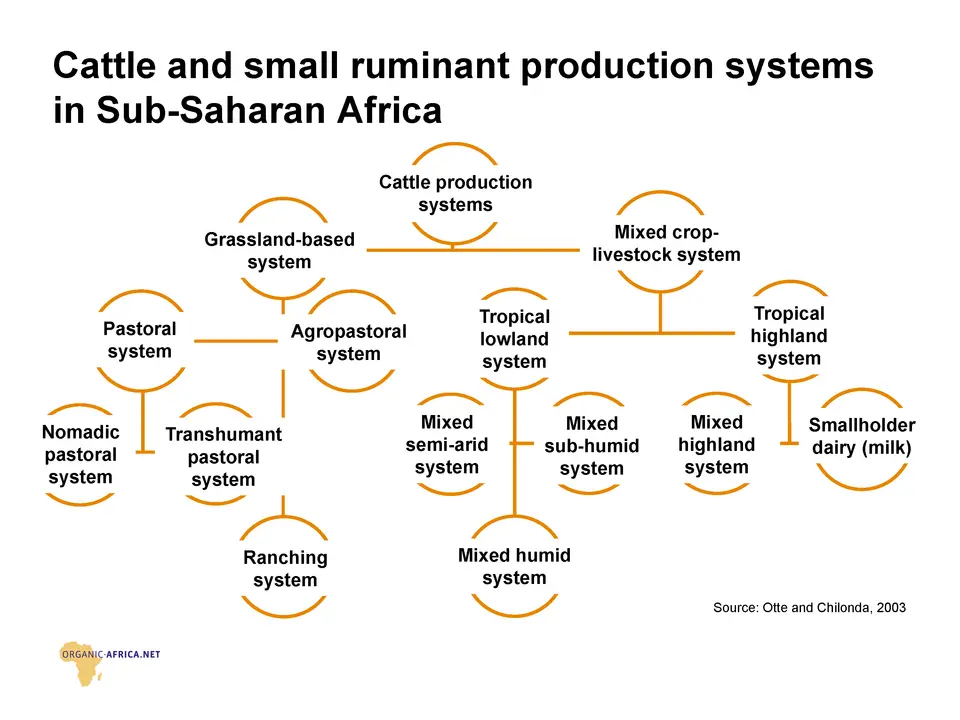
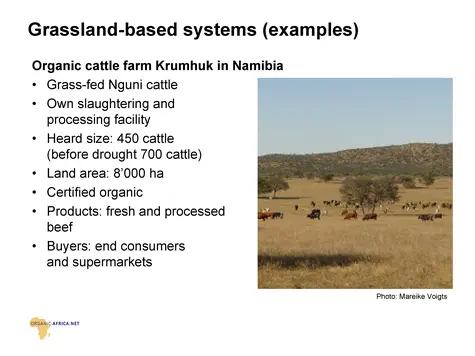
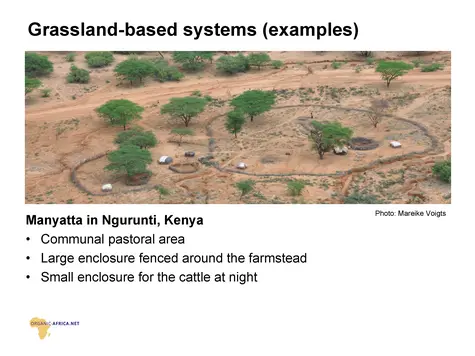
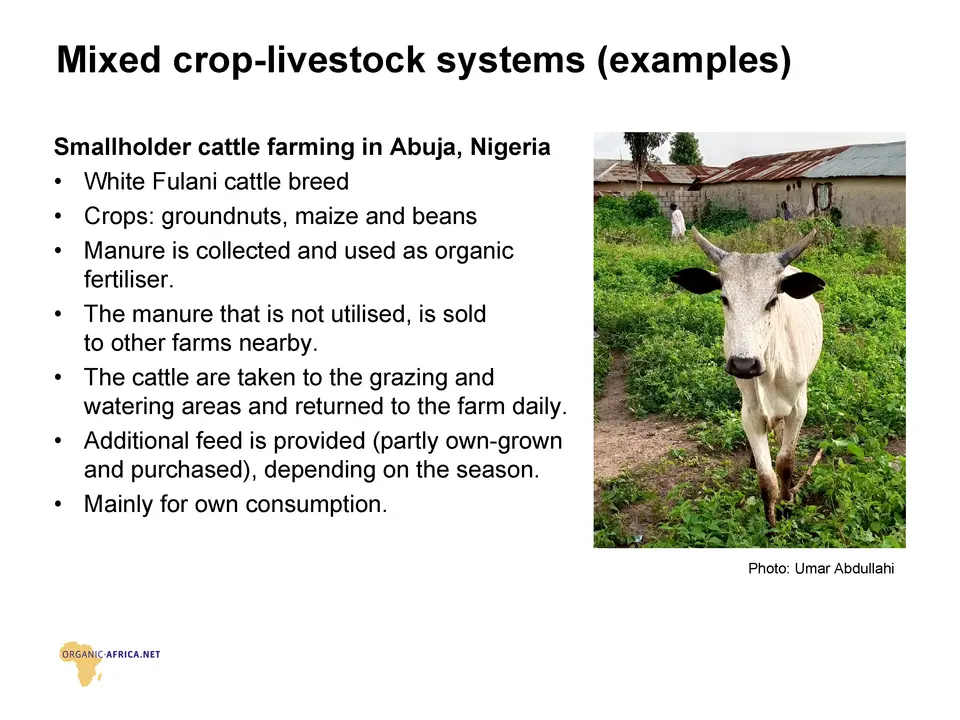
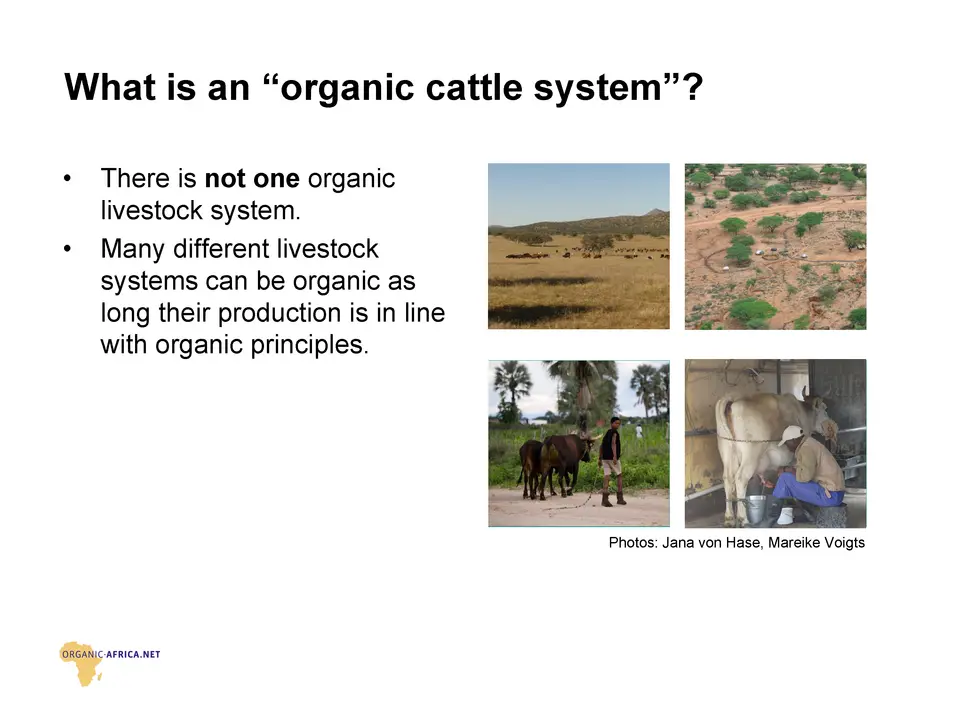
 tap and then scroll down to the Add to Home Screen command.
tap and then scroll down to the Add to Home Screen command.